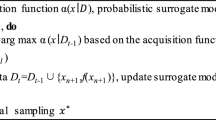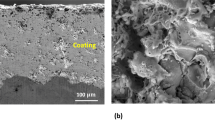Abstract
Accurate tool wear prediction is of great significance to improve production efficiency, ensure product quality and reduce machining cost. This paper proposes a hybrid physics data-driven model-based fusion framework for tool wear prediction to improve low prediction accuracy of physical model and poor interpretation of data-driven model. In this framework, physical information and local features of sensor measurement signals are used as inputs to build a hybrid physics data-driven (HPDD) model. And data mining and physics principles are effectively integrated by using unlabeled samples for data expansion. Piecewise prediction is introduced to reduce difficulty in parameter estimation. Then, in order to manage prediction uncertainty of physical information and HPDD method, two prediction results are gradually combined based on Bayesian fusion mechanism to eliminate prediction error. Finally, the effectiveness of the proposed method is verified by experiment. Compared with existing methods, this method significantly improves prediction. The mean values of root mean square error (RMSE) and mean relative error (MARE) for tool wear prediction results are respectively 2.28 and 1.85.











Similar content being viewed by others
References
Zhang C, Wang W, Li H (2022) Tool wear prediction method based on symmetrized dot pattern and multi-covariance gaussian process regression. Measurement 189:110466
He Z, Shi T, Xuan J (2022) Milling tool wear prediction using multi-sensor feature fusion based on stacked sparse autoencoders. Measurement 190:110719
Luo H, Zhang Z, Luo M, and Zhang D (2022) A comparative study of force models in monitoring the flank wear using the cutting force coefficients. Proc Inst Mech Eng Pt C-J Mechan Eng Sci 2022 0(0):1–14
Wilkus M, Rauch L, Szeliga D, Pietrzyk M (2019) Evaluation of adhesive wear mechanism for application in hybrid tool wear model in hot forging process. Arch Metall Mater 64(4):1395–1402
Hua J, Shivpuri R (2005) A cobalt diffusion based model for predicting crater wear of carbide tools in machining titanium alloys. J Eng Mater Technol-Trans Asme 127(1):136–144
Yen Y, Sohner J, Lilly B, Altan T (2004) Estimation of tool wear in orthogonal cutting using the finite element analysis. J Mater Process Technol 146(1):82–91
Palmai Z (2013) Proposal for a new theoretical model of the cutting tool’s flank wear. Wear 303(1–2):437–445
Liu J, Shao Y (2018) An improved analytical model for a lubricated roller bearing including a localized defect with different edge shapes. J Vib Control 24(17):3894–3907
Attanasio A, Ceretti E, Rizzuti S, Umbrello D, Micari F (2008) 3d finite element analysis of tool wear in machining. CIRP Ann Manuf Technol 57(1):61–64
John R, Lin R, Jayaraman K, Bhattacharyya D (2021) Modified taylor ’s equation including the effects of fiber characteristics on tool wear when machining natural fiber composites. Wear 468:203606
Zhang X, Peng Z, Liu L, Zhang X (2022) A tool life prediction model based on taylor’s equation for high-speed ultrasonic vibration cutting ti and ni alloys. Coatings 12(10):1553
Slamani M, Dagger J, Hamedanianpour H (2015) Comparison of two models for predicting tool wear and cutting force components during high speed trimming of cfrp. IntJ Mater Form 8(2):305–316
Ding H, Shen N, Shin Y (2012) Thermal and mechanical modeling analysis of laser-assisted micro-milling of difficult-to-machine alloys. J Mater Process Technol 212(3):601–613
Zhu D, Zhang X, Ding H (2013) Tool wear characteristics in machining of nickel-based superalloys. Int J Mach Tools Manuf 64:60–77
Wang C, Ming W, Chen M (2016) Milling tool’s flank wear prediction by temperature dependent wear mechanism determination when machining inconel 182 overlays. Tribol Int 104:140–156
Zhu K, Yu X (2017) The monitoring of micro milling tool wear conditions by wear area estimation. Mech Syst Signal Process 93:80–91
Duan J, Zhang X, Shi T (2023) A hybrid attention-based paralleled deep learning model for tool wear prediction. Expert Syst Appl 211:118548
Zhang K, Zhu H, Liu D, Wang G, Huang C, Yao P (2022) A dual compensation strategy based on multi-model support vector regression for tool wear monitoring. Measurement Sci Technol 33(10):105601
Nie P, He C, Xu L, and Cui K (2015) The prediction research of tool vb value based on principal component analysis and svr. International Conference on Intelligent Systems Research and Mechatronics Engineering (ISRME 2015) 121:41–44
Cheng M, Jiao L, Shi X, Wang X, Yan P, and Li Y (2020) An intelligent prediction model of the tool wear based on machine learning in turning high strength steel. Proc Inst Mech Eng B: J Eng Manuf 234(13):1580–1597
Kuo P, Cai D, Luan P, Yau H (2023) Branched neural network based model for cutter wear prediction in machine tools. Struct Health Monit-an Int J 22(4):2769–2784
Kuo P, Lin C, Luan P, Yau H (2022) Dense-block structured convolutional neural network-based analytical prediction system of cutting tool wear. IEEE Sens J 22(21):20257–20267
Huang Z, Zhu J, Lei J, Li X, Tian F (2020) Tool wear predicting based on multi-domain feature fusion by deep convolutional neural network in milling operations. J Intell Manuf 31(4):953–966
Yao Y, Li X, Yuan Z (1999) Tool wear detection with fuzzy classification and wavelet fuzzy neural network. Int J Mach Tools Manuf 39(10):1525–1538
Malhotra J, Jha S (2021) Fuzzy c-means clustering based colour image segmentation for tool wear monitoring in micro-milling. Precision Eng-J Int Soc Precision Eng Nanotech 72:690–705
Bai Y, Wang F, Fu R, Hao J, Si L, Zhang B, Liu W, Davim J (2021) A semi-analytical model for predicting tool wear progression in drilling cfrp. Wear 486–487:204119
Zhang Y, Zhu K, Duan X, Li S (2021) Tool wear estimation and life prognostics in milling: Model extension and generalization. Mech Syst Signal Process 155:107617
Tang Y, Zhao P, Fang X, Wang G, Zhong L, Li X (2022) Numerical simulation on erosion wear law of pressure-controlled injection tool in solid fluidization exploitation of the deep-water natural gas hydrate. Energies 15(15):5314
Attanasio A, Ceretti E, Outeiro J, Poulachon G (2020) Numerical simulation of tool wear in drilling inconel 718 under flood and cryogenic cooling conditions. Wear 458:203403
Zhu Q, Sun B, Zhou Y, Sun W, Xiang J (2021) Sample augmentation for intelligent milling tool wear condition monitoring using numerical simulation and generative adversarial network. Ieee Trans Instrument Measurement 70:3516610
Duan J, Hu C, Zhan X, Zhou H, Liao G, Shi T (2022) Ms-sspcanet: A powerful deep learning framework for tool wear prediction. Robot Comput Integr Manuf 78:102391
He J, Sun Y, Yin C, He Y, and Wang Y (2022) Cross-domain adaptation network based on attention mechanism for tool wear prediction. J Intell Manuf 34:3365–3387
Qin Y, Liu X, Yue C, Zhao M, Wei X, Wang L (2023) Tool wear identification and prediction method based on stack sparse self-coding network. J Manuf Syst 68:72–84
Wei Y, Wan W, You X, Cheng F, Wang Y (2023) Improved salp swarm algorithm for tool wear prediction. Electronics 12(3):769
Hanachi H, Yu W, Kim I, Liu J, Mechefske C (2019) Hybrid data-driven physics-based model fusion framework for tool wear prediction. Int J Adv Manuf Technol 101(9–12):2861–2872
Huang W, Zhang X, Wu C, Cao S, Zhou Q (2022) Tool wear prediction in ultrasonic vibration-assisted drilling of cfrp: A hybrid data-driven physics model-based framework. Tribology Int 174:107755
Li Y, Wang J, Huang Z, Gao R (2022) Physics-informed meta learning for machining tool wear prediction. J Manuf Syst 62:17–27
Trojahn W, Valentin P (2012) Bearing steel quality and bearing performance. Mater Sci Technol 28(1):55–57
Nikolic H (2008) Would bohr be born if bohm were born before born? Am J Phys 76(2):143–146
Oraby S, Hayhurst D (2004) Tool life determination based on the measurement of wear and tool force ratio variation. Int J Mach Tools Manuf 44(12–13):1261–1269
Lu Y, Xie R, Liang S (2019) Ceemd-assisted bearing degradation assessment using tight clustering. Int J Adv Manuf Technol 104(1–4):1259–1267
Motahari-Nezhad M, Jafari S (2023) Comparison of mlp and rbf neural networks for bearing remaining useful life prediction based on acoustic emission. Proc Inst Mech Eng J: J Eng Tribol 237(1):129–148
Mahmoodzadeh A, Mohammadi M, Daraei A, Faraj R, Omer R, Sherwani A (2020) Decision-making in tunneling using artificial intelligence tools. Tunnell Underground Space Technol 103:103514
Liu H, Liu Z, Jia W, Zhang D, Wang Q, Tan J (2021) Tool wear estimation using a cnn-transformer model with semi-supervised learning. Meas Sci Technol 32(12):125010
Marei M, Li W (2022) Cutting tool prognostics enabled by hybrid cnn-lstm with transfer learning. Int J Adv Manuf Technol 118(3–4):817–836
Qiao H, Wang T, Wang P, Qiao S, Zhang L (2018) A time-distributed spatiotemporal feature learning method for machine health monitoring with multi-sensor time series. Sensors 18(9):2932
Xu X, Wang J, Zhong B, Ming W, Chen M (2021) Deep learning-based tool wear prediction and its application for machining process using multi-scale feature fusion and channel attention mechanism. Measurement 177:109254
Wang J, Li Y, Zhao R, Gao R (2020) Physics guided neural network for machining tool wear prediction. J Manuf Syst 57:298–310
Wang J, Yan J, Li C, Gao R, Zhao R (2019) Deep heterogeneous gru model for predictive analytics in smart manufacturing: Application to tool wear prediction. Comput Ind 111:1–14
Funding
This work was supported in part by the National Natural Science Foundation of China under Grant No. 52075202, and in part by the Key Research and Development Program of Hubei Province, China, under Grant No. 2021AAB001.
Author information
Authors and Affiliations
Contributions
The research progress is supported by contributions from all authors. Conceptualization, methodology, software, verification, formal analysis, and manuscript writing were implemented by Tianhong Gao. Conceptualization, resources, and review and editing were carried out by Haiping Zhu and Jun Wu. Investigation and data collation were realized by Zhiqiang Lu and Shaowen Zhang. The final draft read and approved by all authors.
Corresponding author
Ethics declarations
Competing interests
The authors declare no competing interests.
Additional information
Publisher's Note
Springer Nature remains neutral with regard to jurisdictional claims in published maps and institutional affiliations.
Rights and permissions
Springer Nature or its licensor (e.g. a society or other partner) holds exclusive rights to this article under a publishing agreement with the author(s) or other rightsholder(s); author self-archiving of the accepted manuscript version of this article is solely governed by the terms of such publishing agreement and applicable law.
About this article
Cite this article
Gao, T., Zhu, H., Wu, J. et al. Hybrid physics data-driven model-based fusion framework for machining tool wear prediction. Int J Adv Manuf Technol 132, 1481–1496 (2024). https://doi.org/10.1007/s00170-024-13365-6
Received:
Accepted:
Published:
Issue Date:
DOI: https://doi.org/10.1007/s00170-024-13365-6




